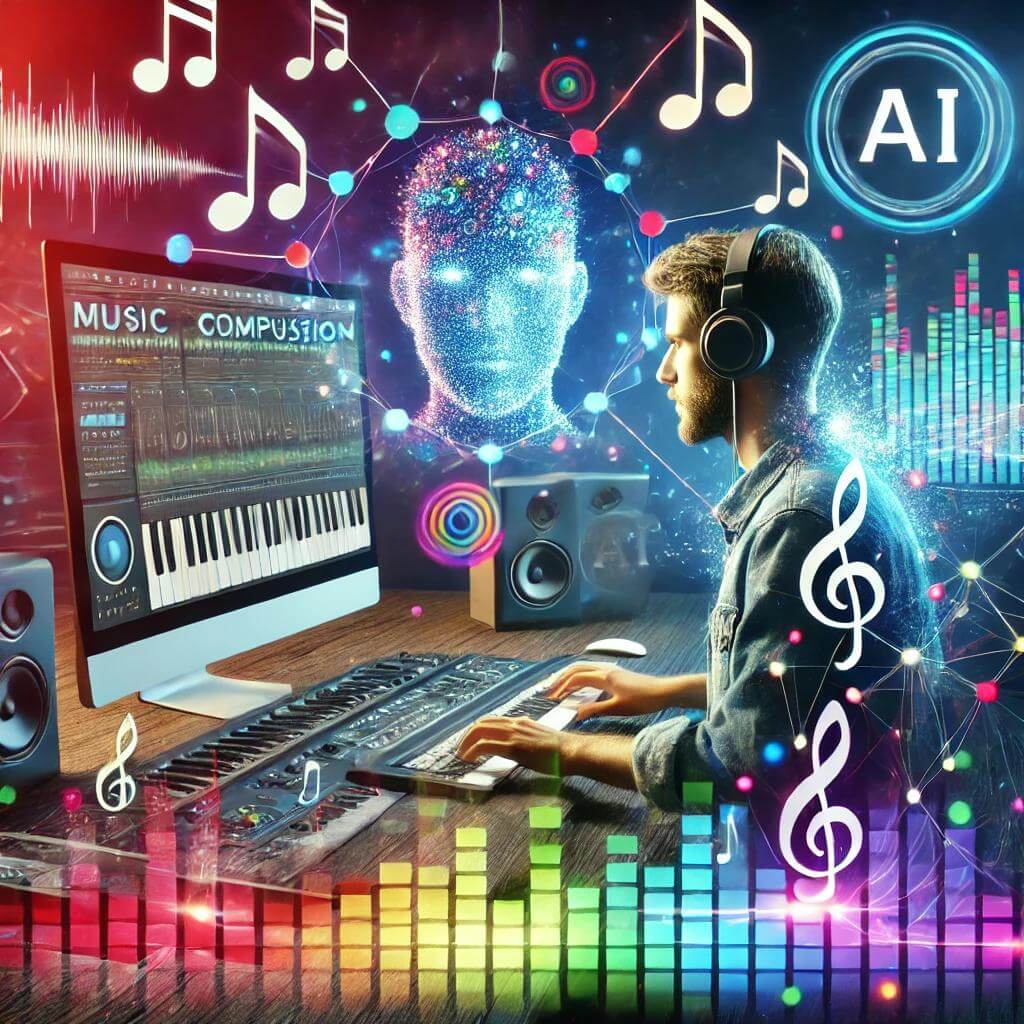How AI is Composing Music: From Algorithms to Hits
Artificial Intelligence has been making waves in various creative fields, and the music industry is no exception. Today, AI-driven music composition is evolving rapidly, with tools like AIVA, Jukedeck, and OpenAI’s MuseNet generating unique and often high-quality musical compositions. As AI becomes more sophisticated, it’s being used not only to assist composers but also to create music independently, from background scores to fully produced songs.
The Rise of AI in Music Composition
AI in music isn’t just about creating random tunes; it’s about analyzing patterns, understanding genres, and recreating complex compositions. Algorithms analyze thousands of musical pieces across genres and styles, helping AI programs “learn” musical rules, preferences, and emotional tones. This gives artists and producers new ways to generate ideas, experiment, and even automate parts of their creative process.
The Mechanics of AI Music Composition
AI-powered music composition generally involves a few key steps:
- Pattern Recognition: AI algorithms analyze existing music to identify patterns and structures in rhythm, melody, and harmony.
- Learning and Imitation: Using machine learning, AI can mimic certain genres, instruments, and even artists’ styles based on data from popular songs.
- Composition and Output: Once the AI “understands” these patterns, it creates new compositions that fit within the learned rules of music theory.
Popular AI Music Composition Tools
AI music composition tools have opened new possibilities for artists and creators. Here’s a closer look at some of the most popular tools revolutionizing music composition.
AIVA (Artificial Intelligence Virtual Artist)
AIVA is one of the leading AI composition tools, known for creating original compositions for various applications, including films, games, and commercials. AIVA’s compositions are based on classical music principles but span various genres.
- Key Features:
- Creates music that can be customized by genre, style, and instrumentation.
- Trained on a dataset of classical music but adaptable to other genres.
- Popular among content creators looking for royalty-free music.
| Feature | Description |
|---|---|
| Genre Customization | Users can select from various styles and genres |
| Classical and Modern Fusion | Based on classical but capable of modern tunes |
| Commercial Use | Ideal for use in multimedia projects |
Jukedeck
Jukedeck offers an easy-to-use AI composition platform where users can generate music based on mood and genre preferences. Though Jukedeck was acquired by TikTok, its technology is still widely influential.
- Key Features:
- Easy customization of music mood, style, and tempo.
- Perfect for background music in short videos, advertisements, and social media.
- Popular for creating music quickly and affordably without needing complex software.
MuseNet by OpenAI
MuseNet is a powerful tool developed by OpenAI that generates music in a wide range of genres. Unlike some AI music tools, MuseNet can combine styles and genres, blending pop with classical or jazz with electronic.
- Key Features:
- Can generate compositions up to 10 minutes long.
- Offers unique cross-genre combinations.
- Uses a neural network trained on millions of musical notes.
How AI Analyzes Musical Patterns
AI music composition relies on deep learning and pattern recognition to analyze musical elements. This process involves:
- Data Collection: AI tools are trained on vast datasets of existing music across genres and styles.
- Learning Musical Theory: AI programs incorporate knowledge of rhythm, harmony, and melody, understanding how musical elements relate.
- Emotion Detection: Some advanced AI systems analyze how different sounds elicit emotions, helping them create music with intended emotional effects.
AI-Generated Music in Mainstream Media
AI-generated music has already made its mark in various media, from advertisements to video games. Here are a few notable examples:
- Film Scores: AI has been used to generate background scores for films, especially low-budget projects needing affordable solutions.
- Advertisements: Many brands use AI-generated music to customize ads and create on-brand, engaging audio experiences.
- Video Games: In gaming, AI can generate adaptive music that changes in response to player actions, enhancing immersion.
| Application | Example |
|---|---|
| Film Scores | Background music in independent films |
| Advertisements | Customizable music for brand campaigns |
| Video Games | Adaptive music that responds to player actions |
The Future of AI in Music Production
AI’s role in music production is expected to grow as it becomes more sophisticated. While some artists worry that AI may replace traditional composition, others see it as a collaborative tool that can inspire new ideas and speed up the production process.
Future Trends in AI Music Composition
- Personalized Music Creation: AI could create personalized soundtracks tailored to individual listeners’ tastes, based on data from streaming habits.
- Collaborative AI Tools: More tools are emerging that allow human composers to work alongside AI, enhancing creativity without replacing the artist’s unique touch.
- Ethical Considerations: The music industry will need to address ethical issues around AI ownership and copyright, as questions about who “owns” AI-created music arise.
Conclusion
AI is reshaping the music industry, offering both exciting possibilities and ethical challenges. As AI composition tools become more advanced, they provide artists, composers, and creators with a valuable resource for generating, experimenting, and producing music. Whether used for inspiration or for automating parts of the creative process, AI music composition tools like AIVA, Jukedeck, and MuseNet are paving the way for a new era in music production.
By balancing innovation with ethical considerations, AI can complement rather than replace human creativity, leading to a future where technology and artistry harmoniously coexist.


Post Comment